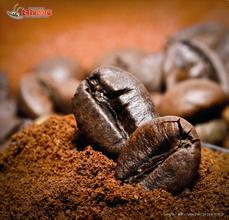Taste, yield, taste and flavor description of Ugandan coffee growing environment
Taste, yield, taste and flavor description of Ugandan coffee growing environment
It belongs to the basic flavor. It is characterized by chloride, bromide, iodide, nitrate and sulfate solution of potassium and lithium. Sour (acidy), mellow (mellow), winey (winey), bland (light), sharp (sour) and sour (soury) are mainly felt by the fungiform mastoid on the front edge of the tongue. The four basic flavors are produced by the interaction of different relative intensity, which is also the basis for the classification of coffee with similar taste. Spicy (nippy)
Secondary taste associated with "acidy". When coffee is inhaled into the mouth, the tip of the tongue has a sweet and prickly feeling. When the coffee cools down, sweetness becomes the main taste in the mouth. Because the proportion of acid is higher than the average level, and the sour taste is produced by the sour taste, it is produced in the process of mixing with stronger sugar. Costa Rica's SHB coffee has this characteristic.
The coffee growing industry in Uganda is one of the pillar industries of its exports. Uganda is the birthplace of Robsta in Africa, just as Ethiopia is the origin of Arabica coffee, while Robster coffee was first discovered in Uganda. So far, Uganda has a history of growing coffee for more than 100 years. The output ranks second in Africa, after Ethiopia. At the same time, Uganda is one of the few major countries in Africa dedicated to the production of organic coffee. In Uganda (Uganda), Arabica coffee beans account for only 15% of the country's total coffee production, and Uganda's best coffee is mainly produced in the mountains of Elgon and Bugisu along the Kenyan border in the north-east and Ruwensori in the west.
Uganda is a tropical African country, its fertile soil, suitable altitude and climatic conditions are suitable for the growth of high-quality coffee. As early as more than a decade ago, the leaders of China and Ukraine had the intention to enhance the trade cooperation and traditional friendship between the two countries through coffee trade. With the concern of the leaders of the two countries and the support of the Beijing Municipal Government, Beijing Beichen Industrial Group and the Ugandan Coffee Development Bureau formally signed a cooperation agreement on January 21 this year. The coffee launched by Chenao Company chooses the pattern of Crown Crane, a rare bird well known in Uganda, as a trademark to represent the natural and pure coffee products.
It belongs to the basic flavor. It is characterized by chloride, bromide, iodide, nitrate and sulfate solution of potassium and lithium. Sour (acidy), mellow (mellow), winey (winey), bland (light), sharp (sour) and sour (soury) are mainly felt by the fungiform mastoid on the front edge of the tongue. The four basic flavors are produced by the interaction of different relative intensity, which is also the basis for the classification of coffee with similar taste. Spicy (nippy)
Secondary taste associated with "acidy". When coffee is inhaled into the mouth, the tip of the tongue has a sweet and prickly feeling. When the coffee cools down, sweetness becomes the main taste in the mouth. Because the proportion of acid is higher than the average level, and the sour taste is produced by the sour taste, it is produced in the process of mixing with stronger sugar. Costa Rica's SHB coffee has this characteristic.

Important Notice :
前街咖啡 FrontStreet Coffee has moved to new addredd:
FrontStreet Coffee Address: 315,Donghua East Road,GuangZhou
Tel:020 38364473
- Prev

Description of varieties and flavors of Ethiopian coffee beans taste treatment method grinding scale of varieties in producing areas
Ethiopian Coffee Bean species Flavor description Taste treatment Variety production area Grinding scale Ethiopia Sidamo is a single origin type grown in Arabica coffee in Sidamo Province, Ethiopia. Like coffee in most African countries, Ethiopian Sidamo is characterized by small gray beans, but characterized by its rich, spicy, wine or chocolate-like taste and flowers.
- Next

Introduction of rose summer coffee beans in Panamanian Alida Manor Red Wine treatment Emerald Manor
Panamanian Alida Manor Red Wine treatment Emerald Manor Rose Summer Coffee beans introduction Panama Jade Manor (La Esmeralda) is located in the corner of Baru volcano, so the coffee beans produced in this area are mostly named after Baru Mountain, the area around Boquete is scenic, there are quite a lot of leisure hotels, villa, resort estates, and even along the important river Rio Caldera.
Related
- Detailed explanation of Jadeite planting Land in Panamanian Jadeite Manor introduction to the grading system of Jadeite competitive bidding, Red bid, Green bid and Rose Summer
- Story of Coffee planting in Brenka region of Costa Rica Stonehenge Manor anaerobic heavy honey treatment of flavor mouth
- What's on the barrel of Blue Mountain Coffee beans?
- Can American coffee also pull flowers? How to use hot American style to pull out a good-looking pattern?
- Can you make a cold extract with coffee beans? What is the right proportion for cold-extracted coffee formula?
- Indonesian PWN Gold Mandrine Coffee Origin Features Flavor How to Chong? Mandolin coffee is American.
- A brief introduction to the flavor characteristics of Brazilian yellow bourbon coffee beans
- What is the effect of different water quality on the flavor of cold-extracted coffee? What kind of water is best for brewing coffee?
- Why do you think of Rose Summer whenever you mention Panamanian coffee?
- Introduction to the characteristics of authentic blue mountain coffee bean producing areas? What is the CIB Coffee Authority in Jamaica?

